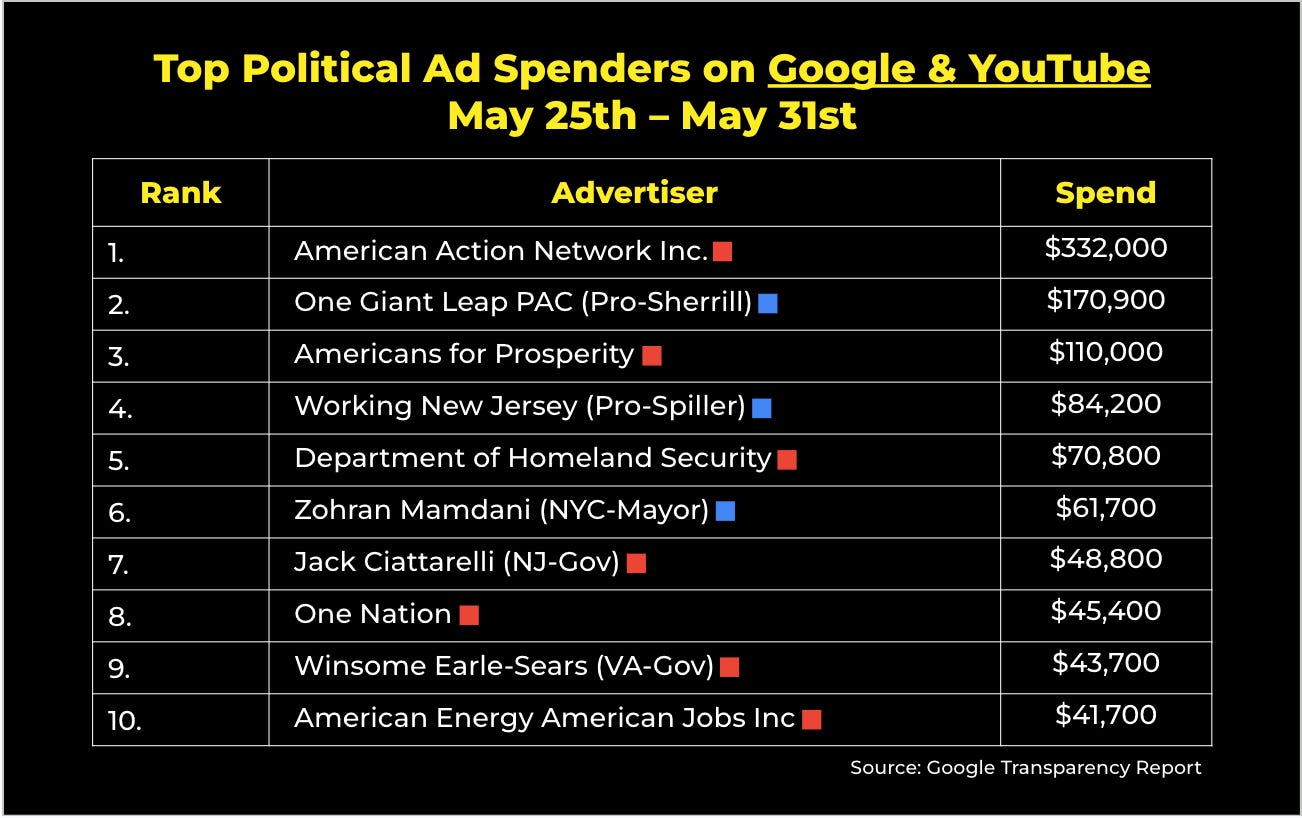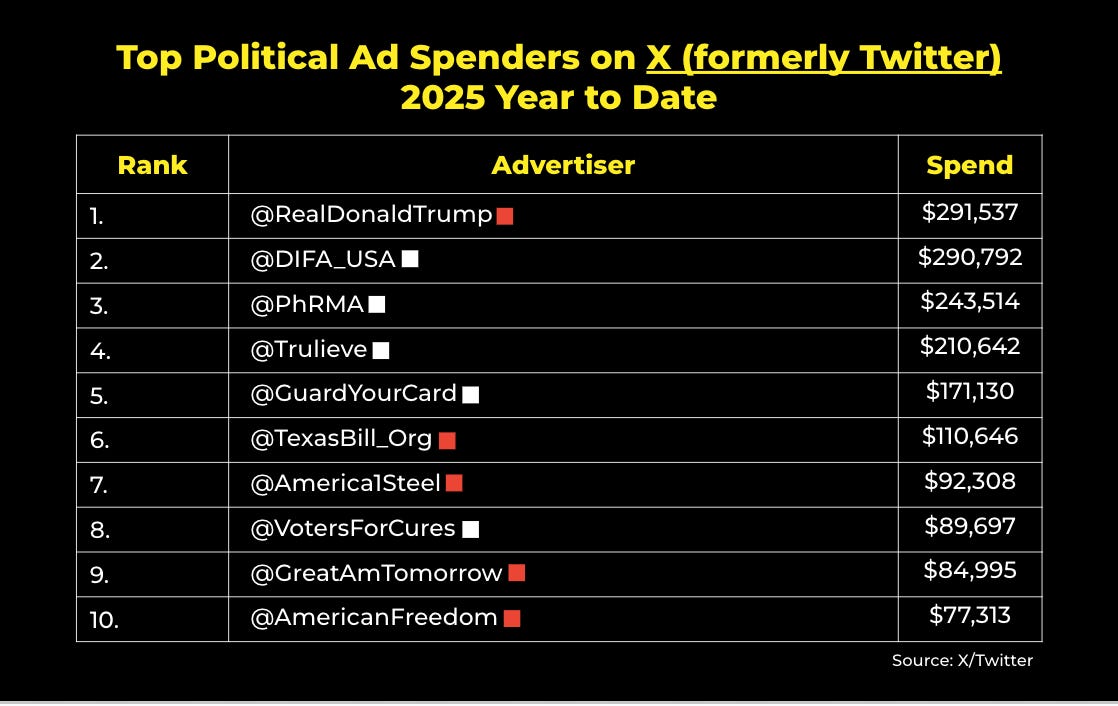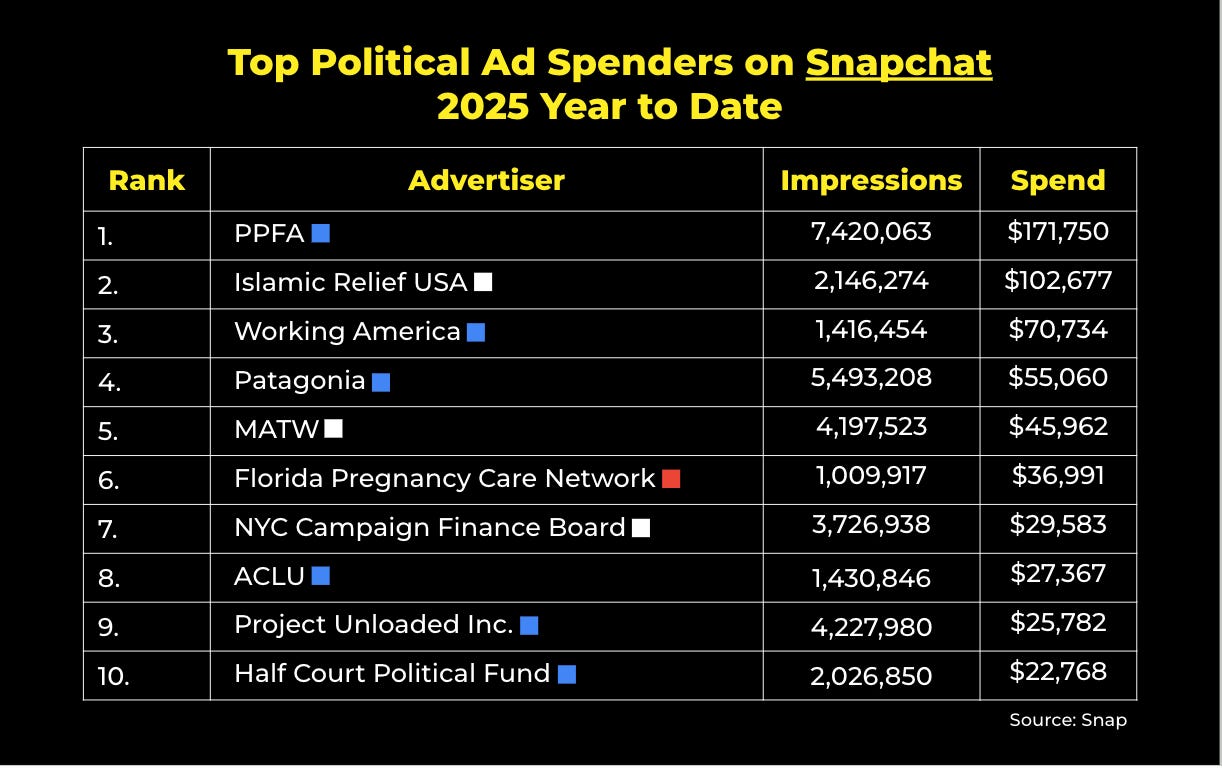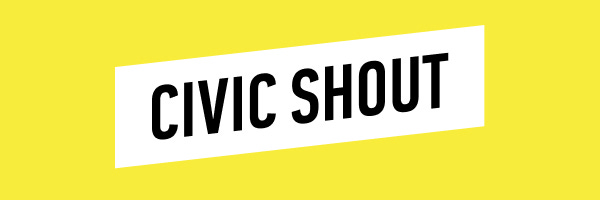We Tried Bringing Culture Into Politics – Now, It’s Time For Politics In Culture
Also inside: the OpenAI failed coup is becoming a movie, New Jersey ad spending heats up ahead of primary day, and more
This newsletter is brought to you by the donor acquisition approach that helps you turn $1 into $2.
Hey, everyone 👋 Lucy here again – I said I wasn’t going too far (and I meant it!). We at COURIER are busy cooking up the next era of FWIW. As part of that transition, I’ll be here playing emcee to introduce some of the fabulous interim guest authors we’ve got lined up for you for the next few weeks.
This week, we will be hearing from Megan Burns, a longtime digital content marketing expert who has worked with orgs like the Colorado Democratic Party, Reproductive Freedom for All, and Red Wine & Blue. Megan started off creating viral moments in the beauty industry before moving to politics + activism and has some crucial insights to share on what political digital strategists can learn from other industries 👀👀
More on that below, but first…
Digital ad spending, by the numbers:
FWIW, U.S. political advertisers spent about $11.3 million on Facebook and Instagram ads last week. Here were the top ten spenders nationwide:
Amidst the drama surrounding Ben Shapiro, The Daily Wire still dropped over $27,000 on Facebook + Instagram ads running specifically under his name. The ads promote his new, apparently even more unhinged show called “Ben After Dark”, as well as these fairly hilarious “anti-woke” Father’s Day ads (it is the golden age of grift, after all). The ads are running nationwide on Facebook + Instagram.
Meanwhile, political advertisers spent just over $2.5 million on Google and YouTube ads last week. These were the top ten spenders nationwide:
New Jersey heads to the polls for the gubernatorial primaries this upcoming Tuesday, and things are really starting to heat up. Looking at Google + YouTube ads running just in New Jersey over the past week, we’ve got: Mikkie Sherril’s PAC, One Giant Leap PAC, clocking in at over $170,900, Sean Spiller’s PAC, Working New Jersey, clocking in at over $84,000, Republican Jack Ciaterelli’s campaign at $48,800, Josh Gottheimer’s campaign at $40,300, and Steve Fulop’s Coalition for Progress PAC at $34,300. And those are just the top spenders!
On X (formerly Twitter), political advertisers in the U.S. have spent around $3.8 million on ads in 2025. According to X’s political ad disclosure, here are the top spenders year to date:
…and lastly, on Snapchat, political advertisers in the U.S. have spent around $868,900 on ads in 2025. Here are the top spenders year to date:
Jon Ossoff’s campaign dropped some new direct-to-camera, selfie-style fundraising asks from Ossoff himself on Snap last week.
Tired of burning money with Care2 or Meta ads?
It’s 2025, and groups like Common Cause, Earthjustice, and Amnesty International are leaning on Civic Shout to acquire ROI-positive donors and activists. See how you can, too.
We Tried Bringing Culture Into Politics – Now, It’s Time For Politics In Culture
This FWIW Deep Dive is authored by Megan Burns, a longtime digital content marketing expert who has worked with orgs like the Colorado Democratic Party, Reproductive Freedom for All, and Red Wine & Blue
For years, I’ve watched campaigns, pundits, and politicians try to force culture into politics, trying to make civic engagement more accessible, more relevant, and, dare I say, cool. With Gen Alpha entering the political realm in 2028, we must flip the formula in this new media environment, where attention is currency and influence can’t be confined to campaign season. It’s time to bring politics into culture.
We’re not just watching politics unfold anymore. We’re watching it be shaped, streamed on Twitch, live on Instagram Stories, reacted to in a YouTube video, liked in the comments of a TikTok, in the carousel of a meme page. Creators are the culture, and if we want our movements to matter, we need to authentically meet people where they already are: in the feeds, formats, and feelings that shape their everyday experience.
And that’s something folks on the far right have got down pat. Dare I remind us of charts like this from the 2024 election?
That’s why working and partnering closely with influencers and creators, inside and outside the political sphere, isn’t optional. They’re shaping narratives and trends faster and more nimbly than institutions ever could, and they’re doing it with trust, style, and emotional resonance.
I know this because I come from the world at the forefront of the internet, beauty. In that space, you have to connect with your community and earn their trust. We aren’t selling you yet another oil-based lippie; it’s a lifestyle, experience, vibe. Content needs to make people feel. If it doesn’t make people feel more informed, relaxed, joyous, proud, confident, or even enraged or envious, then there is a lack of connection.
Political content should take a page from this. It’s not enough to be factually correct or well-intentioned. It has to be watchable, shareable, and memorable. It has to evoke.
One of the best examples I’ve seen of this came from a creator who, in the wake of Roe being overturned, filmed herself doing her daily makeup routine and other “lifestyle” tasks while explaining what medication abortion is. It didn’t feel like a lecture, but more like a friend telling you the truth while getting ready to go about your day. And it worked! It was honest. It was intimate. It was viral. That’s the power of culture-forward political content: it gets under your skin best.
We should empower more creators to speak this language of culture that translates urgency into impact (here’s another great example). It’s not about giving creators a script but about providing them with the knowledge to share with their community and peers – and the infrastructure to build long-standing, sustainable relationships with the political and advocacy world.
And when candidates, elected officials, or advocacy leaders do try to engage meaningfully with creators or even exist as creators themselves, we shouldn’t demean or dismiss them.
But this isn’t just a strategy for the politically initiated. Some of the most effective political content comes from people who don’t identify as “political” at all. They’re thirst traps talking about bodily autonomy. They’re parenting influencers talking about book bans. Beauty brand owners explaining tariffs. Songwriters creating this generation's working-class ballads. These creators reach people who might never have opened a ballot guide before, but will watch every video, join the stream, or read the blog that person makes.
Politics doesn’t live in a separate lane anymore. It’s in every part of our lives, our jobs, health, joy, fashion, and aesthetics. So if we want to win and change hearts and minds, we need to be willing to tell stories that feel like life, not like a lecture.
This next chapter of digital organizing isn’t just about mobilizing voters to knock doors; it’s about mobilizing culture and change. That means elevating new voices, investing in partnerships, and taking creative risks that match the moment.
If we want to build power, we must be willing to share it, especially with the people shaping what the internet cares about.
Because at the end of the day, politics is now culture. And the culture is happening, right now, one post at a time.
Tired of burning money with Care2 or Meta ads?
It’s 2025, and groups like Common Cause, Earthjustice, and Amnesty International are leaning on Civic Shout to acquire ROI-positive donors and activists. See how you can, too.
More from around the internet:
If you haven’t already, make sure you check out the first episodes of COURIER’s newest shows: How Is This Better? with Akilah Hughes, which is covering everything from politics to entertainment to tech and late-stage capitalism, and REPRESENT, a docuseries following Deja Foxx, repro rights activist + Gen Z influencer, as she runs for Congress.
New research from Pew confirms that news influencers are moving to Bluesky… but that doesn’t actually mean they’re leaving X/Twitter. And man, oh man, did the Trump-Elon meltdown yesterday prove that!
You might remember our deep dive on NYC mayoral candidate Zohran Mamdani’s interesting digital strategy a few weeks ago… Well, one of the predictions we made has come true. (FWIW, for those tracking, Andrew Cuomo does still appear to be leading the Dem primary.)
The drama that was the OpenAI failed coup in 2023, when Sam Altman was fired and then quickly re-hired, is apparently being turned into a movie.
That’s it for FWIW this week. This email was sent to 24,381 readers. If you enjoy reading this newsletter each week, would you mind sharing it on X/Twitter, Threads, or Bluesky? Have a tip, idea, or feedback? Reply directly to this email.












